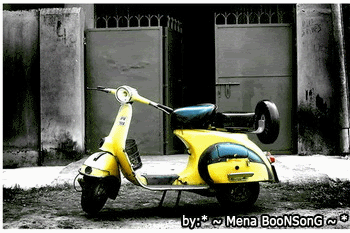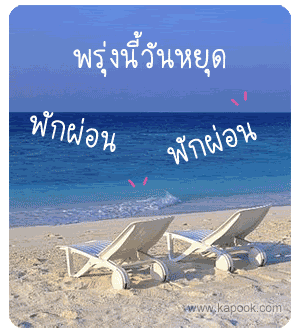 อุทยานหุ่นขี้ผึ้งสยามเกิดขึ้น จากความตั้งใจ และความคิดของท่านผู้ก่อตั้งซึ่งมีรากฐานการเริ่มต้นของงานมาจากงานหล่อพระพุทธรูป งานหล่อประติมากรรมรูปต่างๆ นับจากอดีตจนสู่ปัจจุบัน เป็นระยะเวลากว่า ๔๐ ปีที่ผ่านมา จากประสบการณ์ทำให้ผู้ก่อตั้งมีความคิดที่จะสร้างสรรค์ ผลงานประติมากรรมรูปเหมือน ของพระสงฆ์รูปต่างๆ ซึ่งจำพรรษาในกุฏิ และรูปเหมือนบุคคลสำคัญต่างๆที่ท่านผู้ก่อตั้ง มีความศรัทธายกย่อง ในด้าน แนวความคิด ในการทำงาน และการดำเนินชีวิต จนประสบความสำเร็จ รวมทั้งรูปเหมือน วิถีชีวิตวัฒนธรรม ความเป็นไทย ในภาคต่างๆ ของประเทศไทย จึงได้เริ่มก่อตั้ง โครงการอุทยาน หุ่นขี้ผึ้งสยามขึ้นมา ในปีพุทธศักราช ๒๕๔๐ และด้วยความ มุ่งมั่น ที่มาจากความคิดสร้างสรรค์ จากความเชื่อมั่น ในคำสอน เรื่องทำความดี ความศรัทธาในบุคคล กำลังใจจากครูอาจารย์ เพื่อนมิตรและครอบครัว ทำให้โครงการ อุทยานหุ่นขี้ผึ้ง ได้มีโอกาสเป็นส่วนหนึ่งของสังคมไทย ที่จะนำเสนอ งานสร้างสรรค์ ด้านศิลปะ วัฒนธรรมไทย วิถีชีวิตความเป็นอยู่ในสังคมไทย นับแต่อดีตจนถึงปัจจุบัน เพื่อสืบทอด สิ่งดีงามเอกลักษณ์ ของไทยให้คงอยู่สืบต่อชนรุ่นหลัง.
อุทยานหุ่นขี้ผึ้งสยามเกิดขึ้น จากความตั้งใจ และความคิดของท่านผู้ก่อตั้งซึ่งมีรากฐานการเริ่มต้นของงานมาจากงานหล่อพระพุทธรูป งานหล่อประติมากรรมรูปต่างๆ นับจากอดีตจนสู่ปัจจุบัน เป็นระยะเวลากว่า ๔๐ ปีที่ผ่านมา จากประสบการณ์ทำให้ผู้ก่อตั้งมีความคิดที่จะสร้างสรรค์ ผลงานประติมากรรมรูปเหมือน ของพระสงฆ์รูปต่างๆ ซึ่งจำพรรษาในกุฏิ และรูปเหมือนบุคคลสำคัญต่างๆที่ท่านผู้ก่อตั้ง มีความศรัทธายกย่อง ในด้าน แนวความคิด ในการทำงาน และการดำเนินชีวิต จนประสบความสำเร็จ รวมทั้งรูปเหมือน วิถีชีวิตวัฒนธรรม ความเป็นไทย ในภาคต่างๆ ของประเทศไทย จึงได้เริ่มก่อตั้ง โครงการอุทยาน หุ่นขี้ผึ้งสยามขึ้นมา ในปีพุทธศักราช ๒๕๔๐ และด้วยความ มุ่งมั่น ที่มาจากความคิดสร้างสรรค์ จากความเชื่อมั่น ในคำสอน เรื่องทำความดี ความศรัทธาในบุคคล กำลังใจจากครูอาจารย์ เพื่อนมิตรและครอบครัว ทำให้โครงการ อุทยานหุ่นขี้ผึ้ง ได้มีโอกาสเป็นส่วนหนึ่งของสังคมไทย ที่จะนำเสนอ งานสร้างสรรค์ ด้านศิลปะ วัฒนธรรมไทย วิถีชีวิตความเป็นอยู่ในสังคมไทย นับแต่อดีตจนถึงปัจจุบัน เพื่อสืบทอด สิ่งดีงามเอกลักษณ์ ของไทยให้คงอยู่สืบต่อชนรุ่นหลัง.The Inspiration for Siam Cultural ParkSiam Cultural Park was initiated by a group of people who specialized in making Buddha images and had exceptional backgrounds and strong experience in sculpture and molding works. The experience they gained in over 40 years of working in molding and sculpture inspired them to have the greater ambition to create realistic wax statues of monks and other important and successful people who are respected by the Thai people. They also wanted to create a waxwork zone showing the lifestyle of Thai people in each region in the past. The Siam Cultural Park was established in 1997 out of the founders’ ambition to generate creative works and their dedication to do good things. Their faithfulness in other people and the encouragement they received from teachers, gurus, friends and family were the fundamental source of success of the Siam Cultural Park project. The park is intended to present creative artworks reflecting Thai culture and ways of life from the past until the present for the next generations to learn about the uniqueness of Thai culture.
เพื่อวัตถุประสงค์
๑. เพื่อเป็นสถานที่พักผ่อนทางจิตใจ
๒. เพื่อเป็นแหล่งการศึกษาการเรียนรู้ตามหลักสูตรการศึกษาในปัจจุบัน
๓. เพื่อปลูกจิตสำนึกในการดำเนินชีวิต
๔. เพื่อส่งเสริมพระพุทธศาสนาสำหรับเยาวชน
๕. เพื่ออนุรักษ์สืบสานศิลปะและวัฒนธรรมไทย
Objectives
1. To be a recreational place of mind
2. To be an educational tourism destination
3. To help people understand and appreciate the traditional way of life
4. To promote knowledge of Buddhism5. To maintain traditional Thai art and culture
Objectives
1. To be a recreational place of mind
2. To be an educational tourism destination
3. To help people understand and appreciate the traditional way of life
4. To promote knowledge of Buddhism5. To maintain traditional Thai art and culture














ไม่มีความคิดเห็น:
แสดงความคิดเห็น